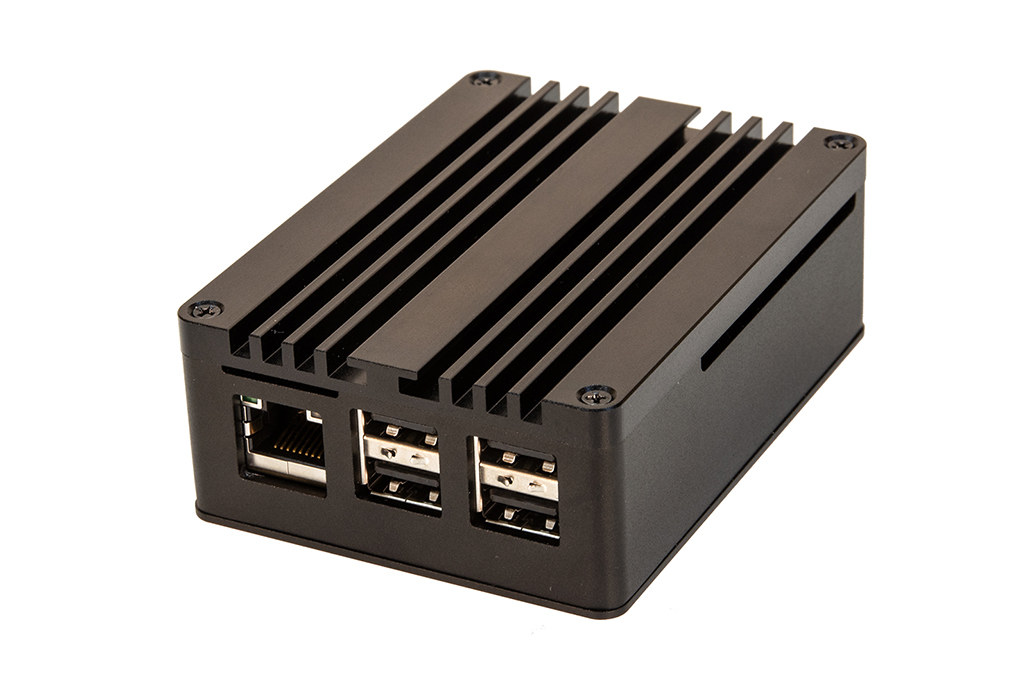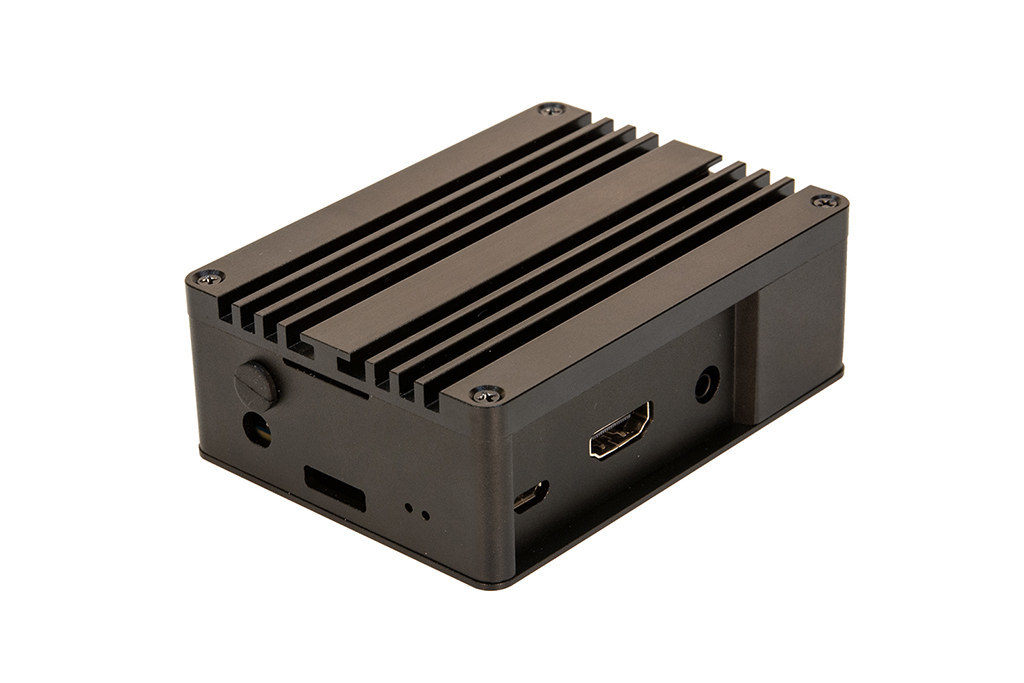Stealth is a Canadian company that specializes in rugged displays, computers, and other ruggedized electronics for the industrial, defense, and marine markets. The company published a press release for a new rugged fanless mini PC equipped with a dedicated NVIDIA GeForce graphics card, and older Intel 6th and 7th Generation Core i5, i7 & Xeon processors.
But as I browsed their website, I also noticed a compact “industrial IoT device” with a rugged enclosure called SIOT-50 that appeared to be fitted with an off-the-shelf Arm Linux SBC.

- SoC – Rockchip RK3288 quad-core Cortex-A17 processor with Arm Mali-T764 GPU, H.264/H.265 video hardware decoder
- System Memory – 2GB DDR3
- Storage – 16GB eMMC flash, MicroSD card slot
- Video Output – HDMI up to 4K @ 30hz
- Audio – Realtek ALC4040 audio codec, 3.5mm audio Line Out jack
- Networking
- Gigabit Ethernet (RJ45)
- Built-in 802.11 b/g/n WiFi 4, Bluetooth 4.0 + EDR with optional antenna
- USB – 4x USB 2.0 ports
- Misc – Power LED, drive/storage LED
- Power Supply – 5V/3A via micro USB port
- Dimensions – 92 x 68.3 x 33.35 mm (fanless rugged aluminum chassis)
- Temperature Range – 0 – 40°C
- Weight – 540 grams

Stealth SIOT-50 industrial IoT device is sold for $545, which looks really expensive for a Tinker Board S with a metal case, but I assume long term supply may be provided for industrial consumers. Further details may be found on the product page.

Jean-Luc started CNX Software in 2010 as a part-time endeavor, before quitting his job as a software engineering manager, and starting to write daily news, and reviews full time later in 2011.
Support CNX Software! Donate via cryptocurrencies, become a Patron on Patreon, or purchase goods on Amazon or Aliexpress




